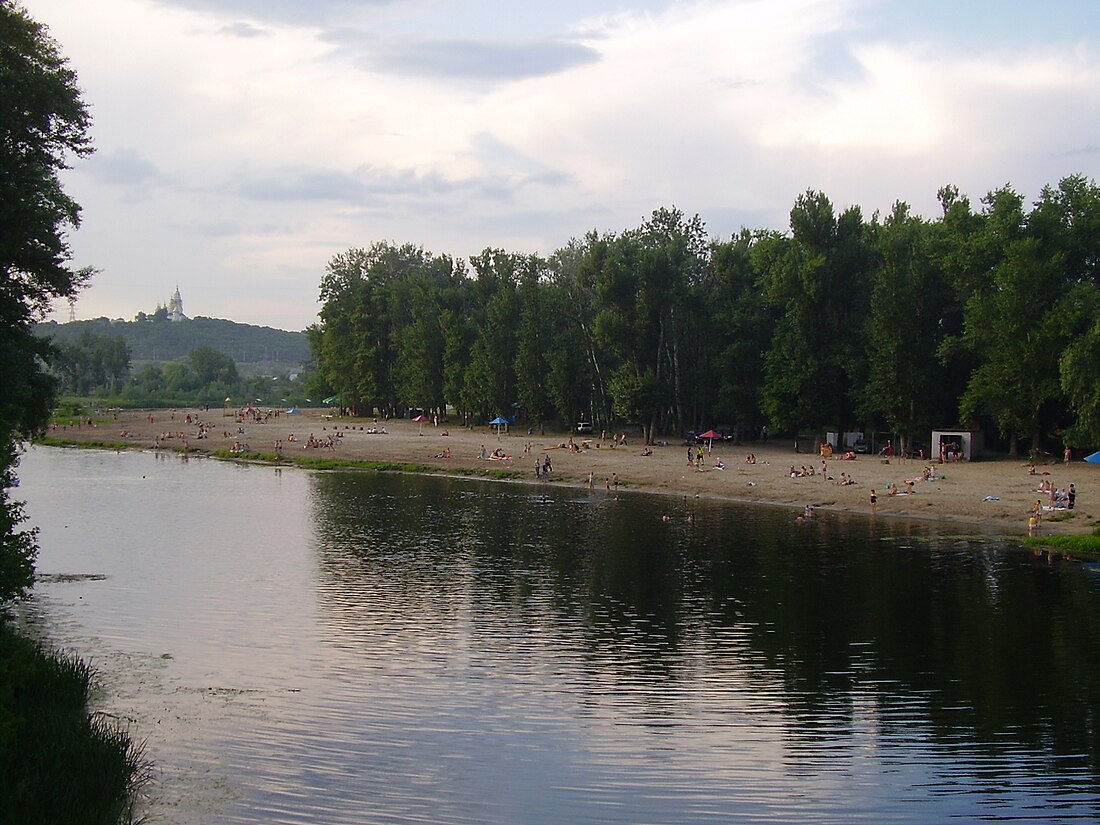Top Qs
Timeline
Chat
Perspective
Vorskla
River in Russia, Ukraine From Wikipedia, the free encyclopedia
Remove ads
The Vorskla (Russian: Ворскла; Ukrainian: Ворскла) is a river that runs from Belgorod Oblast in Russia southwards into northeastern Ukraine, where it joins the Dnieper.
Remove ads
Geography
The river's source is on the western slopes of the Central Russian Upland north of Belgorod. Within Ukraine it flows through the Dnieper Lowland, passing through Sumy Oblast, and then crossing Poltava Oblast. It has a length of 464 kilometres (288 mi), and a basin area of 14,700 square kilometres (5,700 sq mi).[1] The river is the 15th longest in Ukraine stretching for 348 kilometres (216 mi).
Right tributaries of the river include the Vorsklytsia and Boromlia, and left tributaries Merla, Kolomak and Tahamlyk.
Cities on the river are Grayvoron, Okhtyrka, Poltava (the capital of Poltava Oblast), and Kobeliaky. The river is mostly navigable between its delta and Kobeliaky.
Remove ads
History
An ancient fort, thought to be Gelonos, is on the Vorskla south of Okhtyrka. In 1399, the Battle of the Vorskla River was fought in the area. In 1709, the city of Poltava was besieged by Charles XII.
Flora and fauna
In the river there are more than 50 species of fish, most of which are carps and pikes, breams, rudds, roaches, minnows, catfish.
Fauna is represented by hares, foxes, in the woods you can meet roe deer and wild boar, a great variety of birds: wild duck, gray heron, partridge, pheasant.
Along the banks of the river there are large wooded areas, as coniferous (mostly on the left bank) and deciduous forests.
- White lilies of the Vorskla River in July 2005
- Vorskla River near Khukhra village
- Vorska River near Opishnya with a small hydro-electric station
- Vorskla River near Novi Sanzary
- Vorskla River near Novi Sanzary
- Drainage basin of Vorskla
- Mills on Vorskla (beginning of 20th century)
- A map with the Perevolochna fortress and the Vorskla mouth
References
Wikiwand - on
Seamless Wikipedia browsing. On steroids.
Remove ads











